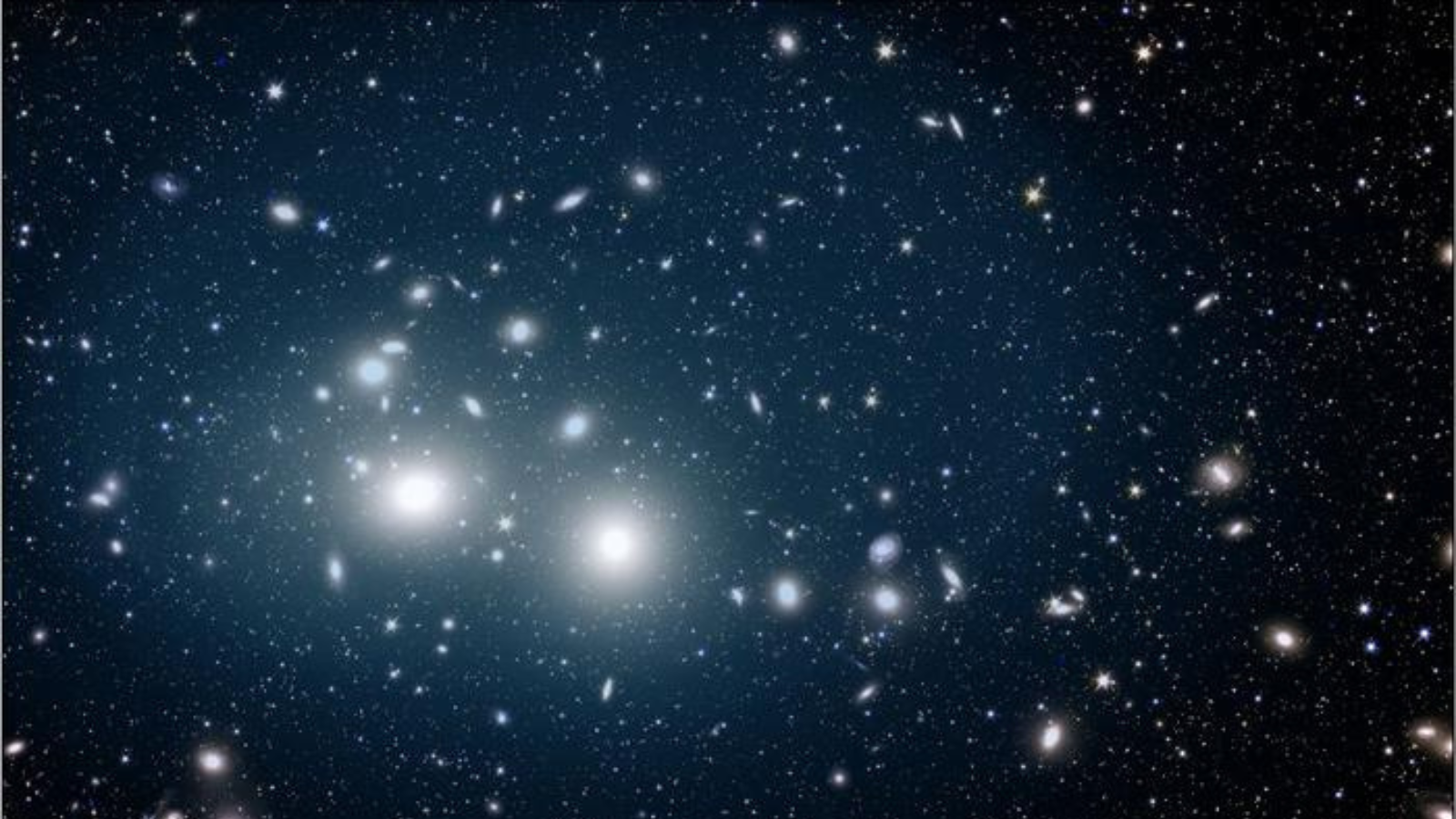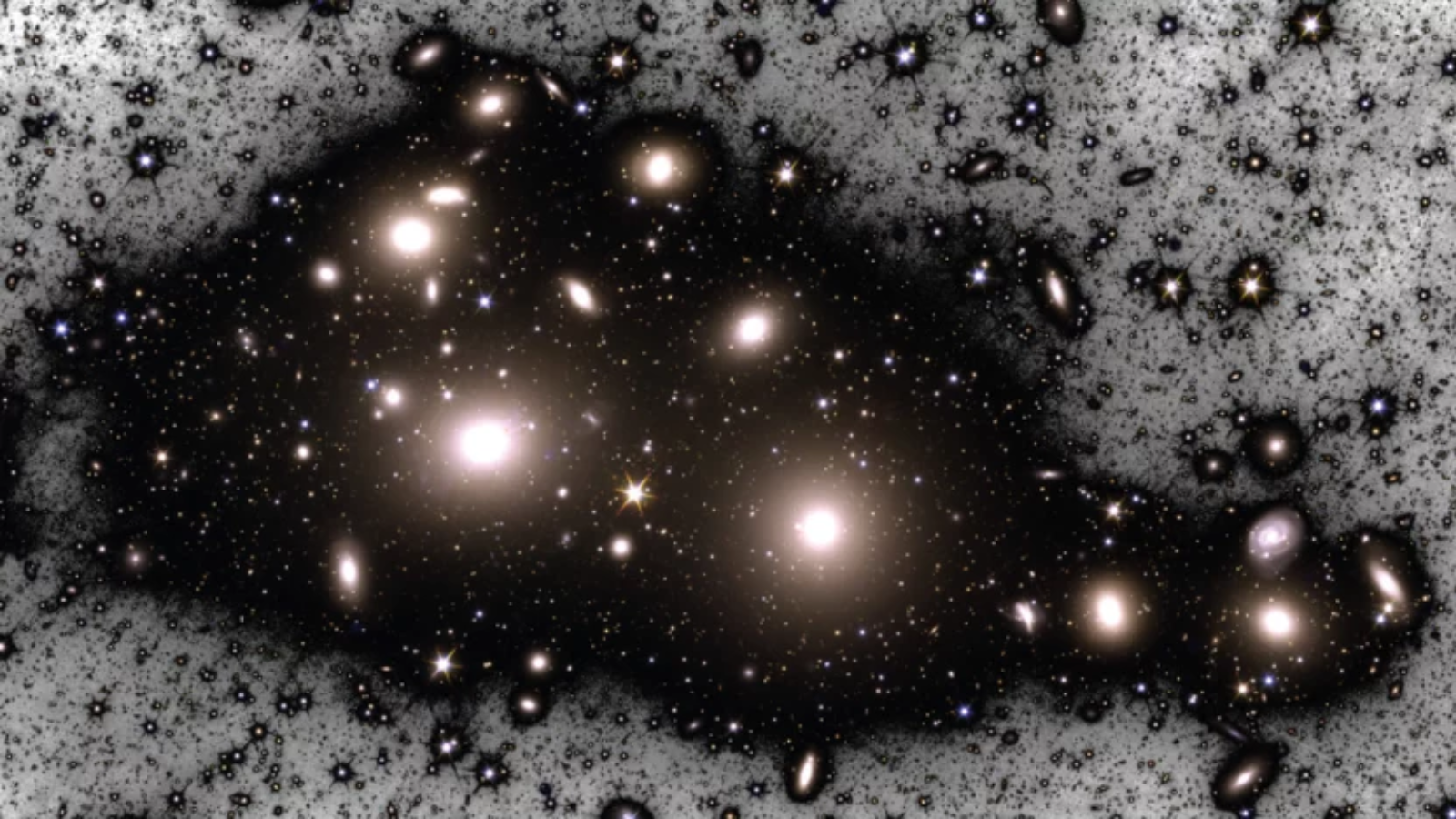Euclid space telescope finds 1.5 trillion orphan stars wandering the Perseus cluster (images)
"This diffuse light is more than 100,000 times fainter than the darkest night sky on Earth."

Using the Euclid space telescope, scientists have discovered a staggering 1.5 trillion orphan stars drifting through a massive cluster of thousands of galaxies, one of the largest structures in the cosmos.
These orphan stars, ripped free from their own galaxies, are filling the space between the galaxies of the Perseus cluster with ghostly blue light. This so-called "intracluster" light is so faint that it is many thousands of times darker than the night sky over Earth.
By observing this intracluster light in the Perseus cluster, which is located 240 million light-years away from Earth and has a mass equivalent to around 650 trillion suns, Euclid may help scientists better understand where the faint light component from galaxy clusters comes from and the origins of the cosmic orphans that emit it.
Euclid launched from Cape Canaveral in Florida atop a SpaceX Falcon 9 rocket on July 1, 2023. Euclid's primary mission is to investigate dark energy, the mysterious force accelerating the expansion of the universe, and dark matter, an "invisible" substance that doesn't interact with light and isn't made up of atoms like the "everyday" stuff that surrounds us.
However, despite being designed to peer into the invisible "dark universe," the telescope was also able to detect light emanating from between galaxies in the Perseus galaxy cluster.
"We were surprised by our ability to see so far into the outer regions of the cluster and discern the subtle colors of this light," team leader and University of Nottingham scientist Nina Hatch said in a statement. "This light can help us map dark matter if we understand where the intracluster stars came from. By studying their colors, luminosity, and configurations, we found they originated from small galaxies."
Breaking space news, the latest updates on rocket launches, skywatching events and more!
Orphan stars have the blues
The key to understanding orphan stars in Perseus was Euclid's ability to see the faintest light in the cluster, the intracluster light, which comes not from its galaxies but from between them.
"This diffuse light is more than 100,000 times fainter than the darkest night sky on Earth," team member and Max-Planck Institute for Extraterrestrial Physics Matthias Kluge said. "But it is spread over such a large volume that when we add it all up, it accounts for about 20% of the luminosity of the entire cluster."
The orphan stars seen by Euclid in the Perseus cluster are distinguishable by their characteristic blue coloration and their loose clustering. These features allowed Hatch and colleagues to trace their origins.
The team determined that some of these free-wandering stars in intracluster space were dragged away from the outskirts of galaxies via interactions with other galaxies. Other orphan stars they found came from smaller dwarf galaxies in the Perseus cluster that have been completely disrupted.
What the team discovered next took them by surprise. Once ripped from their home galaxies, intracluster stars are expected to begin orbiting the largest galaxies in the cluster they find themselves isolated in, almost like a lost child in the mall gravitating toward the nearest adult.
Hatch and colleagues didn't find that in Perseus with Euclid, however. Instead, they saw that orphan stars orbited a point between the cluster's two brightest galaxies, NGC 1275 and NGC 1272.
"This novel observation suggests that the massive Perseus cluster may have recently undergone a merger with another group of galaxies," team member and University of Nottingham astronomer Jesse Golden-Marx said. "This recent merger could have induced a gravitational disturbance, causing either the most massive galaxy or the orphan stars to deviate from their expected orbits, thus resulting in the observed misalignment."
The same researchers also used Euclid's sensitive visible light capabilities to spot 50,000 free-flying densely packed and spherical collections of tens of thousands to millions of stars called "globular clusters" in the Perseus galaxy cluster. The diffuse intracluster light seems to be distributed in a similar way to the globular clusters in Perseus, so these conglomerations of stars appear to be the source of at least some of this light.
The stars in these globular clusters lack high concentrations of "metals," a term that astronomers use for elements heavier than hydrogen and helium. This implies to the team that the globular clusters in the Perseus galaxy cluster have made their way inwards from the vast collection of galaxies' outer edges, which are also "metal-poor."
Globular clusters comprise a dominant factor in dwarf galaxies, meaning that some of the intracluster light may originate from the remains of such small galaxies that have been ripped apart by tidal forces generated during encounters with more massive galaxies.
The team also discovered from the Euclid observation of Perseus that the small dwarf galaxies in this galactic cluster increase in number as one moves away from the cluster's center.
The research helps verify Euclid's capability to understand the evolution of galaxies and galaxy clusters and, thus, how the universe came to look the way it does to us today.
Excitingly, these findings are among the first scientific results from Euclid's Early Release Observations, representing just the first 24 hours of Euclid's observations before it began observing its main scientific targets, billions of galaxies across more than a third of the sky on Feb. 14 2024.
The team's research is featured on the paper repository site arXiv.

Robert Lea is a science journalist in the U.K. whose articles have been published in Physics World, New Scientist, Astronomy Magazine, All About Space, Newsweek and ZME Science. He also writes about science communication for Elsevier and the European Journal of Physics. Rob holds a bachelor of science degree in physics and astronomy from the U.K.’s Open University. Follow him on Twitter @sciencef1rst.



